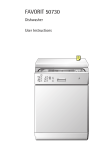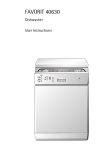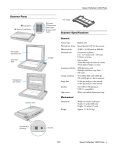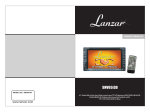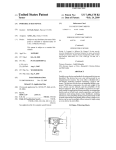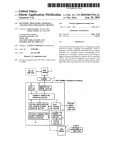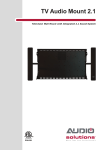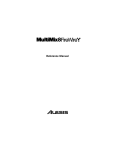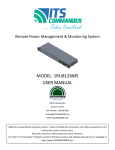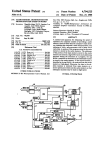Download \ RESULT RETURN TO
Transcript
US 20030140045A1
(19) United States
(12) Patent Application Publication (10) Pub. N0.: US 2003/0140045 A1
Heninger et al.
(43) Pub. Date:
(54) PROVIDING A SERVER-SIDE SCRIPTING
(52)
Jul. 24, 2003
Us. 01. ............................................ .. 707/10; 715/513
LANGUAGE AND PROGRAMMING TOOL
(76) Inventors: Troy Heninger, South Ogden, UT
(US); Rama Rasmussen, Ogden, UT
(Us)
ABSTRACT
Server side scripting language and programming tool that
includes an inventive script that is added to a normal
text-based document can bene?t from a dynamic document
Correspondence Address:
KIRTON & McCONKIE
Suite 1800
architecture. The document is processed by an interpreter to
access database or other information. When a broWser
60 East South Temple
Salt Lake City, UT 84111 (US)
(21) Appl. No.:
10/191,361
(22) Filed:
Jul. 8, 2002
requests a document enhanced by the present invention, the
interpreter processes the document by scanning for the
inventive script commands. When a script command is
encountered, the interpreter executes the script command,
returns the result to the Web page, and strips the executable
script command from the resulting “pure-format” document.
Related US. Application Data
(63)
(57)
Continuation of application No. 09/266,357, ?led on
Mar. 11, 1999, noW Pat. No. 6,470,349.
Once all executable script commands have been executed
and stripped, the resulting document is in a “pure-format”
form, Which is sent by the server to the client computer,
Whose broWser initiated the document request. Due to the
text-based format of the present invention, the novel script
commands may be added, deleted or edited from a typical
Publication Classi?cation
HTML or Web page editor or from a Word processor or text
(51)
Int. Cl? ............................ .. G06F 7/00; G06F 17/30
editor.
REQUEST FOR A SCRIPT
160
l
16?
I68
IS SCRIPT
NO
IN RAM
———>
LOAD SCRIPT FILE
CACHE?
I69
l YES
I64 a
166
EXECUTE SCRIPT
V
\
RESULT RETURN TO
CLIENT BROWSER
V
4
PARSE SCRIPT
Patent Application Publication
Jul. 24, 2003 Sheet 2 0f 12
RAM/ROM MEMORY
Q
US 2003/0140045 A1
DISPLAY
2
CPU
E
1/0 PROCESSORS
g
MOUSE
E
FIG. 2
KEYBOARD
E
Patent Application Publication
Jul. 24, 2003 Sheet 3 0f 12
NETWORK
Q
SERVER
g
V
DATABASE
66
FIG. 3
US 2003/0140045 A1
Patent Application Publication
/_
Jul. 24, 2003 Sheet 4 0f 12
US 2003/0140045 A1
CLIENT BROWSER
70
V
w
INTERNET OR INTRANET
72
\
/_
WEB SERVER
74
v
r
REQUEST INTERPRETER
76
8O /_--
LOADSCRIPTFILE
84
V
82 /
PARSE SCRIPT
V
f
EXECUTE SCRIPT
,
86
T
f
SEND RESULTS
TO mm
Patent Application Publication
Jul. 24, 2003 Sheet 5 0f 12
US 2003/0140045 A1
CLIENT BROWSER
@
I
I
INTERNET OR INTRANET
SERVER %
7
NOVEL SCRIPT INTERPRETER
U//i
FILE SYSTEM
DATABASES
%
10_0
FIG. 5
PROGRAMMATIC
OBJECTS
1%
Patent Application Publication
Jul. 24, 2003 Sheet 6 0f 12
,r-
LOAD SCRIPT FILE
/
PARSE SCRIPT
112
,_._-—
EXECUTE TOKEN SEQUENCE
114
-——-*
CLIENT BROWSER
116
FIG. 6
US 2003/0140045 A1
Patent Application Publication
/-——
122
Jul. 24, 2003 Sheet 7 0f 12
US 2003/0140045 A1
HTML PARSER
i
/
124
COMMAND PARSER
l
EXPRESSION PARSER
HG. 7
120
Patent Application Publication
Jul. 24, 2003 Sheet 8 0f 12
US 2003/0140045 A1
130
STATEMENT INTERPRETER
i
SCAN INTERPRETER
M
ARRAY INTERPRETER
J2
DIR INTERPRETER
E
SQL INTERPRETER
Q
V
DATABASE SQL INTERPRETER
L3§
FIG. 8
Patent Application Publication
Jul. 24, 2003 Sheet 9 0f 12
FOR EACH COMMAND TOKEN
I40
142 ’/
144 __
FOR EACH ATTACHED EXPRESSION TREE
WALK THE TREE, EXECUTING IN DEPTH
FIRST ORDER
7
146 x
INSERT EACH EXPRESSION TREE RESULT INTO
THE PARAMETER STATEMENT
r
I48 "'
EXECUTE THE RESULTING STATEMENT
V
EXECUTE THE COMMAND TOKEN, USING THE
STATEMENT AS THE PARAMETER
V
152
INSERT THE COMMAND RESULT INTO THE
OUTPUT BUFFER
154
v
\
RETURN THE OUTPUT BUFFER
TO THE CLIENT
FIG. 9
US 2003/0140045 A1
Patent Application Publication
/
1 60
Jul. 24, 2003 Sheet 10 0f 12
US 2003/0140045 A1
REQUEST FOR A SCRIPT
l
16¢
IS SCRIPT
NO
|N RAM
———>
/
LOAD SCRIPTFILE
CACHE?
169
l‘ YES
164 m
166
EXECUTE SCRIPT
V
4
v
\
RESULT RETURN TO
CLIENT BROWSER
FIG. 10
PARSE SCRIPT
/
Patent Application Publication
Jul. 24, 2003 Sheet 11 0f 12
US 2003/0140045 A1
170 \
__>
T84
EXECUTE SCRIPT
SWITCH TO
‘
SOURCE SCRIPT
A
YES
172
SOURCE
COMMAND
ENCOUNTERED?
YES
IS SOURCE
FILE NEWER?
NO
+
NO
180
K
TARGET
NO
COMMAND
RETURN OUTPUT TO
CLIENT BROWSER
ENCOUNTERED?
YES
176
\
\
SAVE OUTPUT AS
TARGET SCRIPT
178
,
SWITCH TO
TARGET SCRIPT
' FIG. 11
Patent Application Publication
Jul. 24, 2003 Sheet 12 0f 12
US 2003/0140045 A1
192 \
196
190
<p> _ _ _</p>
198
db clients
[quote(var.text)]
<p>{!p while #n db clients select * from TABLE where NAME =
[quote(var.text)]}</p>
[I WhHe #n }
Select * from TABLE
‘p
Where NAME =
194 /
\ 200
HG. 12
Jul. 24, 2003
US 2003/0140045 A1
PROVIDING A SERVER-SIDE SCRIPTING
LANGUAGE AND PROGRAMMING TOOL
RELATED APPLICATIONS
[0001] This application is a continuation application that
claims priority to Us. patent application Ser. No. 09/266,
357 ?led Mar. 11, 1999, entitled SERVER-SIDE SCRIPT
ING LANGUAGE AND PROGRAMMING TOOL.
[0002]
a computer that is running broWser softWare. The broWser
softWare, then, sends a request across the Internet to the
server at the destination designated by the URL. The desti
nation server Will then send an electronic copy of the desired
document to the broWser computer Where it can be displayed
to the user. This is the typical procedure used for static Web
BACKGROUND OF THE INVENTION
pages that exist as unchanging ?les on a server storage
1. Field of the Invention
device.
[0003] The present invention relates generally to the ?eld
of dynamic computer document creation. In particular, the
present invention relates to a scripting language and method
of use that provides for the use of script codes in a document
formatted for an independent application. Implementation of
the present invention is particularly Well suited for creating
dynamic HTML documents With database information using
scripting commands.
[0004] 2. Background and Related Art
[0005]
[0010] Generally, When a user accesses a speci?c Web
page, the user enters the URL of the desired Web page into
The Internet is a WorldWide netWork of computers
that is noW accessible to almost any potential user With a
computer having netWork access. Hundreds of Internet Ser
[0011]
Web pages may also exist as dynamic documents
that change or update themselves When conditions are met.
Dynamic documents may update themselves each time they
are accessed. This is achieved by alloWing the server to
execute a program When a given URL is accessed.
[0012] A current standard for enabling dynamic pages is
the Common GateWay Interface (CGI), Which alloWs a
server to run programs that can change, update or customiZe
the Web page as it is being accessed.
[0013]
Programs that reside on the server and are invoked
by requests from client broWser applications are referred to
as “server side” programs. After these programs are run and
vice Providers (ISP’s) have emerged to provide Internet
the page is modi?ed thereby, the neWly modi?ed “dynamic”
access to millions of users Who noW use the Internet for
page is sent to the broWser Which requested the page so it can
be displayed to the user.
personal and business communications, information
retrieval, advertising, publishing, sales and document deliv
ery.
[0006] In order to better implement many of these appli
cations, the World Wide Web (“WWW” or “Web”) Was
created. The Web alloWs access to information and docu
[0014] Another method for providing a dynamic Web page
employs programs that are not operating system speci?c.
These programs can be executed on any operating system
supported by the programming language. One very popular
example is the Java programming language created by Sun
be accessed and linked in a “non-linear” fashion, Which
Microsystems, Inc. With Java, a programmer can create
programs and include them in her Web site Where the
programs Will run When the site is accessed by other
alloWs a user to “jump” from one point in a document to
computers on the Web. The programs Will run Whether the
another simply by selecting the link. It also alloWs jumping
accessing computer uses an operating system identical to
that of the Web site or another operating system supported
ments using “hypermedia” or “hypertext” links embedded
into the document. This linking system alloWs documents to
from one document to another Whether the documents are
preserved on the same computer or on another computer
across the World. Documents available on the WWW
by Java. Java programs that are embedded in a site and
include text, sound, graphics images, and even full-motion
video.
Java programs that are executed by the site server When the
site is accessed by another computer are called “servlets” or
[0007] Hypertext Markup Language (HTML), a special
programming language that operates exclusively With
iZed document formatting language, is typically used to
create and format documents for vieWing and linking on the
executed by the accessing computer are called “applets.”
more generically, “server side programs.” A specialiZed
scripts interpreted by server side programs may be referred
to as a “server side scripting language.”
Web. HTML uses special tags or codes embedded into a text
document that format the document and alloW linking to
other documents or other locations in the same document.
These links may also access ?les, such as sound ?les or
graphics ?les that are played or displayed upon selection of
a link. Adocument in an HTML format available on the Web
is typically referred to as a “Web page” or “Web site.”
[0008] The WWW also implements a unique addressing
system that allocates an address or Uniform Resource Loca
tor (URL) for each document on the Web so that Web
[0015] CGI and other dynamically enabled servers can
alloW dynamic pages to access date or time information,
Weather information, ?les With pricing or inventory data or
other Web pages. They may also alloW access to databases
stored on the same server or at another location on the
Internet or a local netWork. This capability greatly enhances
the utility of Web pages and alloWs access to databases
containing huge quantities of information.
SUMMARY OF THE INVENTION
documents may be selectively accessed, sorted and indexed.
[0009] A computer With a dedicated connection to the
Internet and specialiZed server softWare that enables Web
[0016]
The present invention is a server side scripting
access is called a “Web server.” Web documents are located
on storage devices connected to Web servers. A person
seeking access to a Web page uses a computer With “Web
broWser” softWare that alloWs access to speci?ed URL’s as
gramming for Web pages using databases or other dynamic
information. The present invention is implemented by add
Well as searching and other functions.
ment or any other text-based document that can bene?t from
language and programming tool designed to simplify pro
ing script to a normal text-based document, such as an
HTML document, a spreadsheet, a Word processing docu
Jul. 24, 2003
US 2003/0140045 A1
a dynamic document architecture. The document is subse
[0025]
quently processed by the interpreter of the present invention
document access process of a preferred embodiment of the
to access database or other information When the document
is requested by a broWser or at some other time or interval
present invention Wherein a caching process is used to speed
speci?ed by the programmer.
[0017]
When a broWser requests a document enhanced by
the present invention, the interpreter processes the document
by scanning for the inventive script commands. When a
script command is encountered, the interpreter executes the
script command, typically by retrieving or processing data
base information, returns the result to the Web page and
FIG. 4 illustrates a How chart shoWing a dynamic
performance;
[0026] FIG. 5 illustrates a data How chart shoWing data
requests and ?le transfer betWeen components of a preferred
embodiment of the present invention;
[0027]
FIG. 6 illustrates a How chart depicting the process
Whereby the inventive script of the preferred embodiment of
the present invention is loaded, parsed, interpreted and
strips the executable script command from the resulting
executed and sent to the client;
“pure-format” document. Once all executable script com
mands have been executed and stripped, the resulting docu
the script parsing process;
ment is in a “pure-format” form. In the case of a typical Web
page, the “pure-format” form Would be a pure HTML
document containing no extraneous tags or commands. This
“pure-format” document is, then, sent by the server to the
client computer Whose broWser initiated the document
request.
[0018] Due to the text-based format of the present inven
tion, the novel script commands may be added, deleted or
[0028]
[0029]
FIG. 7 illustrates a How chart shoWing details of
FIG. 8 illustrates a How chart shoWing details of
script parsing and execution;
[0030]
FIG. 9 illustrates a How chart shoWing the pro
cessing of expressions and tokens;
[0031]
FIG. 10 illustrates a How chart shoWing hoW a
caching process of the present invention is implemented;
edited from a typical HTML or Web page editor or from a
Word processor or text editor.
[0032] FIG. 11 illustrates a How chart shoWing the func
tion of TARGET and SOURCE commands in script execu
[0019] While the methods and processes of the present
tion; and
invention have proven to be particularly useful in the area of
[0033] FIG. 12 illustrates a script command as used in a
HTML document in accordance With the present invention.
creating dynamic HTML documents With database informa
tion using scripting commands, those skilled in the art can
appreciate that the methods and processes can be used in a
DETAILED DESCRIPTION OF THE
INVENTION
variety of different applications to provide dynamic com
puter document creation.
[0020] These and other features and advantages of the
present invention Will be set forth or Will become more fully
apparent in the description that folloWs and in the appended
claims. The features and advantages may be realiZed and
obtained by means of the instruments and combinations
particularly pointed out in the appended claims. Further
more, the features and advantages of the invention may be
learned by the practice of the invention or Will be obvious
[0034] The present invention relates to generally to the
?eld of dynamic computer document creation. In particular,
the present invention relates to systems and methods for
providing a scripting language that uses script codes in a
document formatted for an independent application. Imple
mentation of the present invention is particularly Well suited
for creating dynamic HTML documents With database infor
mation using scripting commands.
from the description, as set forth hereinafter.
[0035] The folloWing disclosure of the present invention is
BRIEF DESCRIPTION OF THE DRAWINGS
[0021] In order that the manner in Which the above recited
ing Environment” and “Providing a Scripting Language.”
and other features and advantages of the present invention
are obtained, a more particular description of the invention
Will be rendered by reference to speci?c embodiments
thereof, Which are illustrated in the appended draWings.
grouped into tWo subheadings, namely “Exemplary Operat
The utiliZation of the subheadings is for convenience of the
reader only and is not to be construed as limiting in any
sense.
Exemplary Operating Environment
Understanding that the draWings depict only typical embodi
ments of the present invention and are not, therefore, to be
considered as limiting the scope of the invention, the present
[0036]
Embodiments of the present invention embrace the
utiliZation of one or more computer device to provide the
invention Will be described and explained With additional
speci?city and detail through the use of the accompanying
systems and methods discussed herein. Accordingly, FIG. 1
draWings in Which:
vides a suitable operating environment for use of the present
general description of a suitable operating environment in
Which the invention may be implemented. One skilled in the
art Will appreciate that the invention may be practiced by one
invention;
or more computing devices and in a variety of system
[0023] FIG. 2 illustrates a computer hardWare diagram as
used in the implementation of an embodiment of the present
[0037]
[0022]
FIG. 1 illustrates a representative system that pro
invention;
[0024] FIG. 3 illustrates computer hardWare diagram
shoWing the interconnection of prior art client and server
hardWare used to implement a preferred embodiment of the
present invention;
and the corresponding discussion are intended to provide a
con?gurations, including in a netWorked con?guration.
Embodiments of the present invention embrace one
or more computer readable media, Wherein each medium
may be con?gured to include or includes thereon data or
computer executable instructions for manipulating data. The
computer executable instructions include data structures,
objects, programs, routines, or other program modules that
Jul. 24, 2003
US 2003/0140045 A1
may be accessed by a processing system, such as one
associated With a general-purpose computer capable of
performing various different functions or one associated
With a special-purpose computer capable of performing a
limited number of functions. Computer executable instruc
tions cause the processing system to perform a particular
system bus 12. The mass storage devices 26 may be incor
porated into or may be peripheral to computer device 10 and
alloW computer device 10 to retain large amounts of data.
Optionally, one or more of the mass storage devices 26 may
be removable from computer device 10. Examples of mass
function or group of functions and are examples of program
storage devices include hard disk drives, magnetic disk
drives, tape drives and optical disk drives. A mass storage
code means for implementing steps for methods disclosed
herein. Furthermore, a particular sequence of the executable
instructions provides an example of corresponding acts that
device 26 may read from and/or Write to a magnetic hard
disk, a removable magnetic disk, a magnetic cassette, an
optical disk, or another computer readable medium. Mass
may be used to implement such steps. Examples of computer
readable media include random-access memory (“RAM”),
storage devices 26 and their corresponding computer read
able media provide nonvolatile storage of data and/or
read-only memory (“ROM”), programmable read-only
executable instructions that may include one or more pro
gram modules such as an operating system, one or more
memory (“PROM”), erasable programmable read-only
memory (“EPROM”), electrically erasable programmable
read-only memory (“EEPROM”), compact disk read-only
memory (“CD-ROM”), or any other device or component
that is capable of providing data or executable instructions
that may be accessed by a processing system.
[0038] With reference to FIG. 1, a representative system
for implementing the invention includes computer device
10, Which may be a general-purpose or special-purpose
computer. For example, computer device 10 may be a
personal computer, a notebook computer, a personal digital
assistant (“PDA”) or other hand-held device, a Workstation,
application programs, other program modules, or program
data. Such executable instructions are examples of program
code means for implementing steps for methods disclosed
herein.
[0043]
One or more input interfaces 20 may be employed
to enable a user to enter data and/or instructions to computer
device 10 through one or more corresponding input devices
32. Examples of such input devices include a keyboard and
alternate input devices, such as a mouse, trackball, light pen,
stylus, or other pointing device, a microphone, a joystick, a
game pad, a satellite dish, a scanner, a camcorder, a digital
a minicomputer, a mainframe, a supercomputer, a multi
camera, and the like. Similarly, examples of input interfaces
processor system, a network computer, a processor-based
consumer electronic device, or the like.
20 that may be used to connect the input devices 32 to the
system bus 12 include a serial port, a parallel port, a game
[0039] Computer device 10 includes system bus 12, Which
port, a universal serial bus (“USB”), a ?reWire (IEEE 1394),
may be con?gured to connect various components thereof
or another interface.
and enables data to be exchanged betWeen tWo or more
components. System bus 12 may include one of a variety of
bus structures including a memory bus or memory control
ler, a peripheral bus, or a local bus that uses any of a variety
of bus architectures. Typical components connected by
system bus 12 include processing system 14 and memory 16.
Other components may include one or more mass storage
device interfaces 18, input interfaces 20, output interfaces
22, and/or netWork interfaces 24, each of Which Will be
discussed beloW.
[0040]
Processing system 14 includes one or more pro
cessors, such as a central processor and optionally one or
more other processors designed to perform a particular
function or task. It is typically processing system 14 that
executes the instructions provided on computer readable
media, such as on memory 16, a magnetic hard disk, a
removable magnetic disk, a magnetic cassette, an optical
disk, or from a communication connection, Which may also
be vieWed as a computer readable medium.
[0041] Memory 16 includes one or more computer read
able media that may be con?gured to include or includes
thereon data or instructions for manipulating data, and may
be accessed by processing system 14 through system bus 12.
Memory 16 may include, for example, ROM 28, used to
permanently store information, and/or RAM 30, used to
temporarily store information. ROM 28 may include a basic
input/output system (“BIOS”) having one or more routines
that are used to establish communication, such as during
start-up of computer device 10. RAM 30 may include one or
more program modules, such as one or more operating
systems, application programs, and/or program data.
[0042]
One or more mass storage device interfaces 18 may
be used to connect one or more mass storage devices 26 to
[0044]
One or more output interfaces 22 may be employed
to connect one or more corresponding output devices 34 to
system bus 12. Examples of output devices include a moni
tor or display screen, a speaker, a printer, and the like. A
particular output device 34 may be integrated With or
peripheral to computer device 10. Examples of output inter
faces include a video adapter, an audio adapter, a parallel
port, and the like.
[0045] One or more netWork interfaces 24 enable com
puter device 10 to exchange information With one or more
other local or remote computer devices, illustrated as com
puter devices 36, via a netWork 38 that may include hard
Wired and/or Wireless links. Examples of netWork interfaces
include a netWork adapter for connection to a local area
netWork (“LAN”) or a modem, Wireless link, or other
adapter for connection to a Wide area netWork (“WAN”),
such as the Internet. The netWork interface 24 may be
incorporated With or peripheral to computer device 10. In a
netWorked system, accessible program modules or portions
thereof may be stored in a remote memory storage device.
Furthermore, in a netWorked system computer device 10
may participate in a distributed computing environment,
Where functions or tasks are performed by a plurality of
netWorked computer devices.
Providing a Scripting Language
[0046] As provided above, embodiments of the present
invention relate to a scripting language and method of use
that provides for the use of script codes in a document
formatted for an independent application. Implementation of
the present invention is particularly Well suited for creating
dynamic HTML documents With database information using
Jul. 24, 2003
US 2003/0140045 A1
scripting commands. In a preferred embodiment, a server
side scripting language and programming tool greatly sim
pli?es programming of many types of Web pages, including
Web database applications.
[0047] A ?rst step in using a preferred embodiment of the
display device 52 such as a cathode ray tube (CRT), one or
more input/output processors 42, a hard disk 44 or other
mass storage device, a pointing device, such as a mouse 46,
an input device such as a keyboard 48 and various other
peripherals or other devices.
present invention is to create an initial HTML document
[0053] A simple netWorking environment is illustrated in
With the desired structure, layout and format de?ned by
HTML code. After the initial HTML document is complete,
the inventive commands of the scripting language of the
to a computer netWork 62. This computer netWork 62 may
preferred embodiment of the present invention are added to
the initial HTML document to transform the initial HTML
document into a mixed-format scripted document. This
mixed-format scripted document contains the HTML code
of the initial HTML document combined With the inventive
script commands of the preferred embodiment of the present
invention. These script commands, Which are input by a
programmer, contain commands that add functionality to the
Web page being created. Some of these commands may
implement procedures that are executed When the resulting
Web page is accessed thereby creating a dynamic Web page.
FIG. 3 Where one or more client computers 60 are connected
be a localiZed netWork, an intranet, or may utiliZe a Wide
area netWork structure or the Internet to communicate With
a server 64. Server 64 may communicate With a database 66
Which can be physically located on the server hardWare itself
or elseWhere. In some embodiments, server 64 may com
municate directly With database 66 or may employ the
netWork 62 or Internet communications capability to access
the database, as illustrated by database 68.
[0054]
In a preferred embodiment of the present invention,
as shoWn in FIG. 4, a client computer running Web broWser
softWare 70 is connected to the Internet or an intranet 72.
[0048] The currently preferred embodiment of the present
The client Web broWser initiates a request for a speci?c Web
page represented by a URL address. The request is sent over
invention utiliZes a Java servlet to interpret the novel script
commands. Accordingly, the server supports servlets for this
the Internet or intranet 72 to the Web server 74 Where the
URL is located. The Web server 74 ?nds the document
embodiment. Servlets may be supported natively or through
associated With the requested URL and, in a preferred
embodiment, checks the ?le extension of the document that
indicates Whether inventive script commands of the present
the use of plug-in programs that are common in the industry.
The majority of these plug-in programs utiliZe a version of
be installed on the server to enable servlet support. The Java
invention are contained therein. If the inventive script com
mands are not present in the document, the document is
immediately sent to the client Web broWser in its current
environment also provides compatibility With virtually all
form.
established operating systems in use today.
functionality. This structure improves performance and
[0055] If the inventive script commands are present in the
document, the document is sent to the request interpreter 76
of the present invention. At this point, the request interpreter
76 checks to see if the script has already been loaded and
parsed making it ready for execution. This may have taken
place during a prior request for the Web page. If so, the script
eliminates the need for licensing of third party database
Will be held in a RAM cache or otherWise stored in an
Java that is installed on the server. The Java Runtime
Environment (J RE) or the Java Development Kit (JDK) may
[0049] The presently preferred embodiment of the present
invention is entirely contained Within one or more ?les
stored in a standard ?le system, thereby eliminating the need
for a bulky, cumbersome database for program operation and
technology.
[0050] This implementation is quickly and easily
employed for many applications, hoWever, if more speed is
required or if speed takes precedence over ease of imple
mentation, another embodiment may be used that employs a
server add-on using the Common GateWay Interface (CGI)
standard or a server plug-in using the Internet Server Appli
cation Programming Interface—Dynamic Load Library
(ISAPI—DLL) standard.
[0051] When the presently preferred embodiment of the
present invention is used to provide database connectivity to
Web pages or other documents, a Java Database Connec
tivity (JDBC) or Open Database Connectivity (ODBC)
executable form 78 and Will be immediately executed 84
When the page is requested. If the ?le has not been previ
ously accessed, the script Will have to be loaded 80 and
parsed 82 before execution 84. The results are then sent to
the client at 86.
[0056] The data How characteristics of the preferred
embodiment of the present invention is shoWn in FIG. 5
Where a client Web broWser 90 is again shoWn making a
request over the Internet or an intranet 92 for a speci?c Web
page. The Web server 94 receives the request and, When the
?le extension indicates that inventive script commands are
not present in the document, accesses the ?le system 98 to
retrieve the requested document and deliver it to the request
driver is utiliZed to communicate With the database. Cur
ing broWser 90. When the inventive script commands of the
present invention are present in the document, the request is
rently, JDBC is the preferred driver as it provides better
performance With the preferred softWare embodiment.
passed to the novel script interpreter 96. The script inter
preter 96 interprets the inventive script commands in the
[0052] A preferred embodiment of the present invention
generally utiliZes one or more computer devices or comput
ers in a netWork environment. As indicated above, these
computers, as illustrated in FIGS. 1 & 2, may be any type
of computer device, including mainframes, mini-computers,
micro-computers or other variations, hoWever, the most
commonly used variations Will employ a central processing
unit (CPU) 50, With RAM and/or ROM memory 40, a
document and, depending on the nature of the script com
mands, may access ?les in the ?le system 98, access one or
more databases 100 or execute one or more programmatic
objects 102. Adetailed list of the inventive script commands
of the present invention and the actions they invoke is given
beloW.
[0057] The script processing method of the preferred
embodiment of the present invention begins by loading the
Jul. 24, 2003
US 2003/0140045 A1
script ?le 110. In the Web application of the preferred
embodiment, this ?le Will be an HTML document that
[0064] The statement parser Will, likeWise, ?nd array
statements and send them to the Array interpreter 139 Which
contains, in addition to text and HTML code, novel script
commands. HoWever, in other embodiments of the present
invention, the novel script commands may be used to
enhance other types of ?les. By Way of example and not by
limitation, these ?les may be spreadsheet ?les, Word pro
Will interpret those statements by iterating through the
designated arrays.
cessor ?les or graphics ?les or combinations of ?le formats
such as graphics or other ?les embedded in HTML docu
database commands or the remainder of a statement con
ments. A script ?le may be any ?le that contains the novel
script commands of the present invention.
[0058] Once the script ?le is loaded, the interpreter of the
preferred embodiment of the present invention parses the
script 112 thereby creating sequentially ordered tokens for
each element of the ?le. These elements comprise HTML
tags, text, inventive script commands of the present inven
tion, and expressions used by these inventive commands
such as database or ?le locations. After the ?le elements
have been converted to executable tokens they are
assembled into an executable token sequence that Will be
executed immediately and cached so it may be re-executed
each time the page is requested in the future. Execution of
the token sequence 114 creates a neW “pure-format” or
[0065] SQL and database related commands are sent by
the statement parser 132 to the SQL interpreter 137, Which
Will directly interpret a database-sWitching modi?er. Other
taining a database sWitching command Will be forWarded by
the SQL interpreter 137 to a Database SQL interpreter 138
Which is external to the preferred embodiment of the present
invention and typically resides in a database driver or engine
program.
[0066] During the script execution process, as detailed in
FIG. 9, each command token is processed sequentially. With
reference to step 140, if expression trees are attached to
command tokens, they are also processed in the order
encountered. Expression trees 142 folloW an expression
hierarchy or tree structure. When the result of an expression
is dependent upon another, the script execution process of
the preferred embodiment of the present invention executes
the expressions in order 144 starting With the outermost
expressions on the expression tree. The expression results
“pure-HTML” document that is sent to the client broWser
are, then, inserted into the expressions of the next order until
that requested the document 16. Accordingly, a dynamic
all expressions have been processed and the main parameter
Web page is created as the page is updated or recreated each
statement is ready to execute 146. This statement is subse
time the page is requested.
quently parsed out 148 by the statement parser 132 (FIG. 8)
[0059] The parsing procedure of the preferred embodi
to the appropriate interpreter that executes the command
ment of the present invention is shoWn in more detail in
token 150 thereby returning a result that is sent to an output
FIGS. 7 and 8. Parsing takes place at tWo distinct times in
the process of the preferred embodiment, When the script is
initially loaded 120 (FIG. 7) and When the ?le is executed
buffer 152 Where it is combined With the results of other
statements to form the resulting dynamic Web page that is
130 (FIG. 8).
[0067] In order to increase performance, the preferred
embodiment of the present invention utiliZes caching tech
niques to increase response speed. ARAM cache technique
[0060] When a script ?le is initially loaded 120, the
elements of the ?le are parsed by a series of parsers that
recogniZe and process individual types of commands and
their related expressions. The HTML parser 122 distin
guishes betWeen HTML tags and inventive script commands
in the ?le and creates tokens for contiguous HTML blocks.
The Command parser 124 recogniZes the inventive script
sent to the client 154.
is used to speed response time When a client requests a
dynamic Web page. A?le cache may also be used to increase
performance.
[0068] When an inventive script document is requested
160, as shoWn in FIG. 10, the server checks to see if the
commands of the present invention and creates tokens for
each of these commands. When an inventive script com
script is stored in RAM cache 162. If so, the script is
immediately executed 164 and the resulting HTML docu
mand contains one or more expressions, the expression
ment is sent to the client broWser 166. If the script is not
portion of the inventive script command is sent to the
stored in RAM Cache, the script ?le is loaded 168, and
parsed 169 before execution 164 and, ?nally, sent to the
expression parser 126 Which creates a token for the expres
sion Which is passed back to the command parser 124 and
incorporated into the token for the inventive script com
mand.
[0061]
A second parsing process occurs at the time the
token ?le is executed 130. This occurs each time a statement
is encountered While executing a script. At this point, the
statement parser 132 determines the type of statement and
sends the statement to the interpreter appropriate for that
statement.
client broWser 166.
[0069]
A programmer may use the Source command or
Target command to control program execution and caching
and relate script ?les. Using the inventive scripting language
of the present invention, a script ?le may contain script
commands Which, When executed, create a neW script ?le.
The ?le from Which the neW ?le Was created is referred to
as a source ?le. The Source command initiates a comparison
betWeen the current ?le and an associated source ?le from
Which the current ?le Was created. When a Source command
[0062] When a scan statement is encountered by the
statement parser, the statement is sent to the Scan interpreter
is encountered during execution, the creation date of the
current ?le is compared With the creation date of the
134 Which interprets the statement by extracting designated
associated source ?le. The ?le With the most recent date, the
neWer ?le, is selected for execution.
Words from strings as indicated in the statement.
[0063] When the statement parser encounters a directory
statement, the statement is sent to the Dir interpreter 136
Which Will interpret the statement and enumerate the ?les
Within a directory.
[0070] When a Target command is encountered during
script execution, the output of the execution process is
Written to a target ?le that may be another script ?le that can
be subsequently executed.
Jul. 24, 2003
US 2003/0140045 A1
[0071] The operation of the Target and Source commands
[0079] BroWZ Script also supports the retrieving of data
may be more fully understood by reference to FIG. 11.
During the execution of a script ?le 170, if a source
command is encountered 172, a comparison is made to
from HTML page forms as Well as arguments passed after a
question mark ‘?’ at the end of an Internet address or URL.
determine Whether the source or current ?le is neWer 182. If
the source ?le is neWer, the execution process sWitches to the
source ?le 184 and executes the source ?le. If the current ?le
is neWer, execution of the current ?le proceeds. The Source
command can, therefore, be used to ensure that the most
current version of a ?le is used.
[0080] BroWZ Script has extra features for ease of pro
gramming, such as alloWing you to use your favorite Web
page designer and editor for adding and editing of your
script tags. Some knoWledge of HTML is needed to take
advantage of this feature.
[0081]
Installation
[0072] If a target command is not encountered 174 during
execution of a script ?le, the output of the script execution
[0082]
1.1 Server
Will be sent to a client broWser 180 or other source Which
[0083] BroWZ Script is implemented as a Java servlet. So,
your Web server must support servlets, either natively or by
initiated the scripted document request. When a Target
command is encountered the output of the script ?le execu
use of a server plug-in or CGI. If your server does not have
tion process Will be Written to a target ?le rather than being
sent to the client 176. The execution process Will then sWitch
to the target script ?le 178 and execute the target ?le. The
built-in servlet support you must install one of several server
Target command alloWs intermediate ?les, Which may be
you have a version of Java installed on your server. This can
more easily edited, to be created. It also alloWs ?le execution
be freely doWnloaded from Sun’s Java Web site, WWW.j ava
soft.com. You’ll need to doWnload and install the JRE (Java
to become an iterative process.
[0073] In FIG. 12, the syntax of the scripting language of
plug-ins. Most of these servlet add-ons are free or inexpen
sive. Most of these plug-ins, hoWever, Will also require that
Runtime Environment) or the JDK (Java Development Kit).
the preferred embodiment of the present invention is illus
trated. An example line of code is shoWn 190 With various
can run it on any operating system platform for Which the
tags and commands therein. Within the code are some
Java runtime is available, Which includes just about all of the
HTML tags 192 Which Will be differentiated and processed
modern ones.
by the HTML parser 122 (FIG. 7). Script command syntax
[0084] BroWZ Script is implemented in Java therefore you
194 is parsed and processed by the command parser 127
(FIG. 7). Database sWitching syntax 196 Within the code
line is parsed and sent to the SQL interpreter 137 (FIG. 8)
for processing. When found in the code, expression syntax
[0085]
198 is parsed and sent to the expression parser for process
ing. When database access and manipulation is performed,
SQL syntax 200 Will be present. This Will be parsed out and
sent to the database SQL interpreter 138 (FIG. 8) for
Some servers may Work if you simply copy this ?le into the
Servlets folder. Check With your server or plug-in for proper
installation of servlets.
processing.
[0087]
[0074] In order to more fully demonstrate the capabilities
of the preferred embodiment of the present invention, the
folloWing list of program properties, commands and func
tions is presented along With an explanation of each. This
[0088] BroWZ Script requires a JDBC (Java DataBase
Connectivity) or ODBC (Open DataBase Connectivity)
listing is offered as an example of the inventive commands
of the preferred embodiment of the present invention and is
not to be construed as a limitation to the scope of the claims
of this patent.
[0075] 0.1 Standards
[0076] The format of this listing is as folloWs: syntax is in
italics, and commands are bolded Within paragraph descrip
tions. Also example scripts use Courier Font.
1.2 Files
[0086] BroWZ Script is entirely contained Within the
BZScript.j ar ?le. You’ll need to con?gure your server (or the
server plug-in) by adding this ?le to its Java CLASSPATH.
1.3 Database
driver to be able to communicate With your database. It is
usually fastest if you have a J DBC driver for your particular
database, but an ODBC driver Will Work ?ne if you do not.
If you are using JDBC you’ll need to knoW the JDBC URL
to your database. Look in your driver’s user manual for the
proper URL to use for each of your databases. If you choose
to use ODBC, you must set up a DSN (Data Source Name)
for each database you Wish to communicate With. The JDBC
URL you Will use Will be as folloWs: “odbc:your_dsn”.
[0089] 2.0 Properties Files
of Web database applications. To use it, create normal HTML
[0090] These ?les give information to BroWZ Script con
cerning all of the ?les in a directory and the databases With
Which they plan to connect. For every folder in Which
BroWZ script is going to process ?les there must be a
properties ?le called “BZScript.properties”. This is a plain
text ?le usually containing four de?nitions, similar to the
pages, then place special tags containing BroWZ Script
folloWing:
[0077] 0.2 Introduction
[0078] The server-side scripting language and program
ming tool of the present invention is called BroWZ Script. Its
purpose is to greatly simplify programming for many types
commands in the pages. These tags are replaced dynamically
With the result of the command execution When the script is
requested by a broWser and executed by the server. Several
of the commands execute SQL statements against a data
base, and others retrieve data from the resulting roWs and
columns. BroWZ Script takes full advantage of the poWer of
SQL and relies heavily on the resulting data.
[0091] driver=sun.j dbc.odbc.JdbcOdbcDriver
[0092] database=odbc:MyDSN
[0093] username=MyUser
[0094] passWord=MyPassWord
Jul. 24, 2003
US 2003/0140045 A1
[0095]
The driver parameter de?nes Which Java driver to
load. In this case, We are loading the built-in ODBC driver.
If you use another driver you Would place its class name
here. Driver defaults to sun jdbc.odbc.JdbcOdbcDriver.
[0096]
The database parameter de?nes the JDBC URL to
the database. This is dependent on the driver you use and the
database you are connecting to. Since We used the ODBC
driver We speci?ed an ODBC URL containing the DSN.
[0097]
[0110] var.debug=1 # Logs all input and temporary
variable accesses
[0111] var.trace=1 # Logs all internal var related
functions calls
[0112] prop.debug=1 # Logs all property variable
accesses
[0113] prop.trace=1 # Logs all internal property
related function calls
The username and passWord parameters are used
When your database requires a user name and passWord to
access the database. You may include a space character, if
[0114] session.debug=1 # Logs all session variable
accesses
needed, Within the value, but do not surround it by quotation
marks, as you might think. Also, do not put spaces or tabs
on either side of the equal sign ‘=’. The name, the equals
sign, and the value must be run together With no White space.
[0098] BroWZ script is not limited to only one database as
described above. In order to support connections With more
than one database the contents of the BZScript.properties
?le has to be changed a little. Let’s start With an example and
then explain the differences:
[0115] session.trace=1 # Logs all internal session
related function calls
[0116] One last thing, the properties ?le is not limited to
just the variables detailed above. You may place many other
parameters in this ?le, and retrieve them from any script in
the same directory, using the prop object. See section 3.5.3
for more information on prop object.
[0117] 3.0 Language
[0099] databases=customers, ?nance
[0118] This section details the language of BroWZ Script.
[0100] customers.driver=sun.jdbc.odbc.Jdbcodb
To begin With, you need to knoW that BroWZ Script ?les are
usually just normal HTML ?les, containing one or more
cDriver
[0101] customers.database=odbc:CLIENTS
[0102] ?nance.driver=sun.jdbc.odbc.JdbcOdb
cDriver
[0103]
?nance.datab ase=odbc:FINAN CE
[0104] ?nance.username=MyUser
[0105] ?nance.passWord=MyPassWord
[0106]
First notice the databases parameter. This is Where
you list all of the databases With Which you Wish to connect.
All other parameters have the database name and a period
before them, specifying the database to Which they belong.
BroWZ Script commands. These commands may be placed
anyWhere Within the HTML document, but it is usually Wise
to place them in such a Way that you do not break any of the
HTML syntax rules. This recommendation becomes a
requirement if you use an HTML page editor, such as
Microsoft FrontPage, Adobe PageMill, or Netscape Com
poser to add or edit your BroWZ Script ?les.
[0119] BroWZ Script is designed to be case insensitive, but
this has not been thoroughly tested yet. Only fully loWer
case commands, functions, objects, and variables have been
tested.
[0120] 3.1 Syntax
Unless otherWise speci?ed, BroWZ Scripts assume a con
nection With only one database. This default database Will
alWays be the ?rst one listed in the databases parameter. To
communicate With another database the programmer Will
have to specify the connection change Within each script
needing it. This can be done With the db command or With
the db modi?er in any command using SQL.
[0107]
There are other variables alloWed in this ?le that
Will enable verbose debugging features of BroWZ Script. To
enable these features you should set the object and either the
debug or trace variable to 1. The debug variable is less
verbose, but more useful. The trace variable is only useful if
you have the BroWZ Script source code. It Will shoW you
every function that Was called. The recent debug/trace log,
if any, Will be attached to the bottom of the each script
output. This log is also appended to a ?le called BZScript
.log on the server. This log ?le is cleared each time BroWZ
Script is restarted. The example beloW turns on all debug and
trace features in BroWZ Script. It is strongly recommend,
hoWever, that you never use all of these together. open.debug
and var.debug are usually the most useful.
[0108] open.debug=1 # Logs all statement executions
[0109] open.trace=1 # Logs all internal statement
related function calls
[0122]
3.1.1 Brace Delimiters
[0123] Commands are delimited by curly brace characters,
‘{’ and ‘}’, at the beginning and end of each. When you’re
debugging, alWays make sure that these braces appear at the
beginning and end of each command.
[0124]
Note: In BroWZ Script 1.0 the tilde ‘~’ character
Was used to delimit BroWZ Script commands. These Were
harder to read and match up When lots of commands Were
placed close together, so the change Was made to curly
braces. HoWever, the tilde characters are still supported in
1.2, and you may see some older BroWZ Script ?les using
them. But, these characters Will not be supported in future
versions of BroWZ Script so it is strongly recommended that
you use the preferred curly braces, and begin ?xing all 1.0
BroWZ Script ?les.
[0125] 3.1.2 HTML Tag Stripping
[0126] FolloWing the open brace is an optional exclama
tion point, ‘V, and an html tag name. BroWZ Script alWays
strips the entire command from the output. HoWever, in
order to maintain the normal rules of HTML sometimes you
have to place commands Within a paragraph or table cell.






























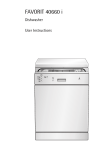
![[quote(var.text)]}](http://vs1.manualzilla.com/store/data/005937533_1-4dd3fe8a9b5a28fbfb6fbb268c8e3b66-150x150.png)
